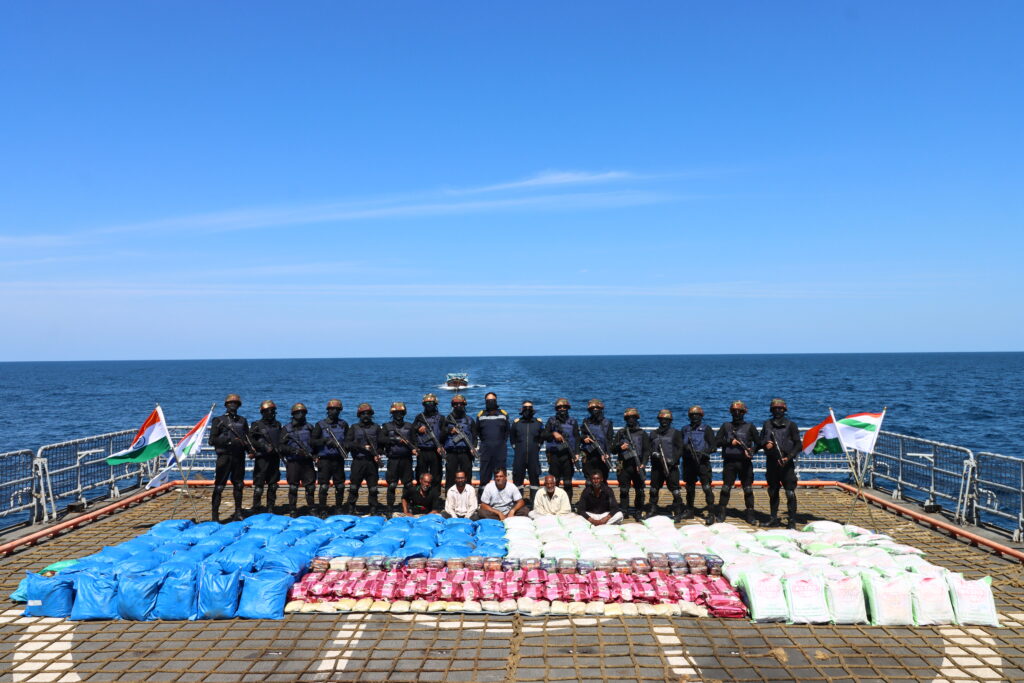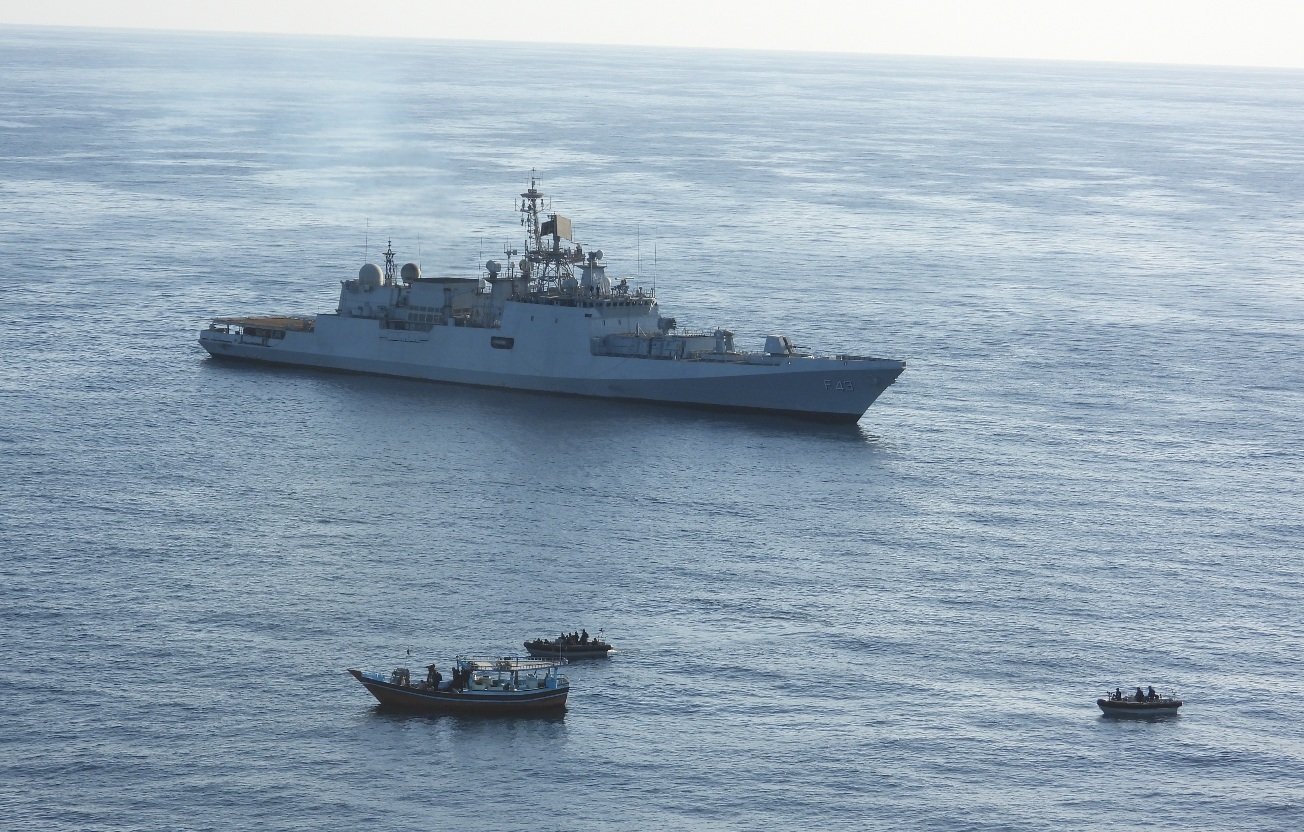In a coordinated operation at sea, the Indian Navy and the Narcotics Control Bureau (NCB) apprehended a suspicious vessel carrying almost 3300 Kgs contraband (3089 Kgs Charas, 158 Kgs Methamphetamine 25 Kgs Morphine).
Based on intelligence received from the Indian Navy’s maritime surveillance aircraft which were corroborated with inputs from the NCB, a mission-deployed IN warship was pressed into action to intercept a suspicious dhow enroute to the Indian waters with sizeable contraband. Navy units successfully located, tracked and intercepted the suspicious boat at sea.
The Boarding Operations on the dhow resulted in the largest seizure of narcotics, in quantity, in recent times. Subsequently, the boat was towed by the IN warship to the nearest Indian port for handing over the crew and contraband to the Law Enforcement Agencies.
This operation is significant, not only in terms of quantity and cost of the seized contraband, but also highlights the collaborative efforts between the Indian Navy and the NCB for disruption of the illegal narcotics smuggling routes, which emanate from the Makran coast and flow towards various IOR countries.

Narcotic Smuggling in the Indian Ocean
Narcotic smuggling in the Indian Ocean is a complex and multifaceted issue involving various criminal organizations, maritime routes, and geopolitical factors. The Indian Ocean serves as a major transit route for narcotics, including heroin, cocaine, and methamphetamine, primarily originating from the Golden Triangle (Southeast Asia) and the Golden Crescent (Southwest Asia). Smugglers use various methods to transport drugs across the ocean, including concealment in shipping containers, small boats, fishing vessels, and even through the use of human couriers.
Narcotic smuggling in the Indian Ocean is often controlled by sophisticated transnational criminal organizations (TCOs) with extensive networks and resources. These organizations may have links to other forms of organized crime, such as human trafficking, arms smuggling, and money laundering. The Indian Ocean region encompasses multiple countries with diverse political landscapes, which can impact narcotic smuggling activities. Weak governance, corruption, and porous borders in certain areas facilitate the operations of criminal networks. Additionally, geopolitical rivalries and conflicts can influence the flow of narcotics and the strategies employed by smugglers.
Governments and law enforcement agencies in countries bordering the Indian Ocean, as well as international bodies, collaborate to combat narcotic smuggling. This includes maritime patrols, intelligence sharing, and interdiction operations targeting smuggling networks. However, challenges such as vast maritime territories, limited resources, and corruption can hamper these efforts.
According to law enforcement officials, smugglers constantly adapt their tactics in response to enforcement measures. This includes the use of sophisticated technology for communication and navigation, as well as exploring new routes and methods to evade detection.

